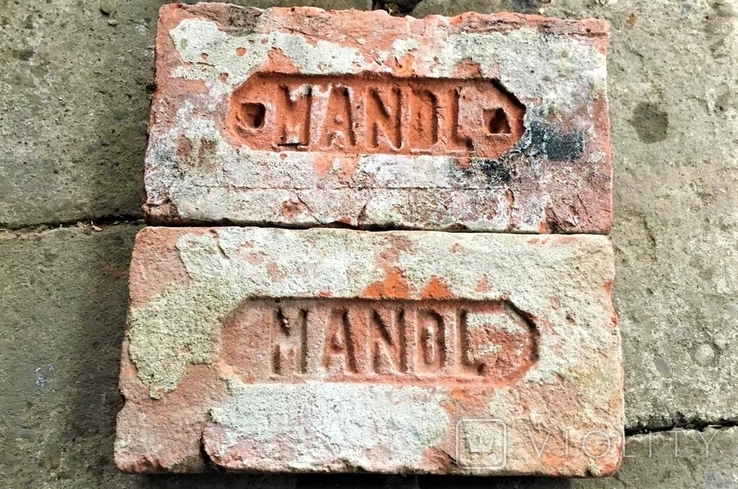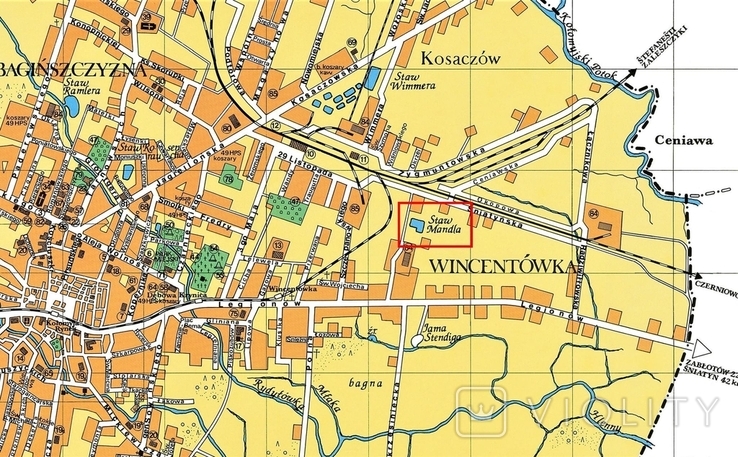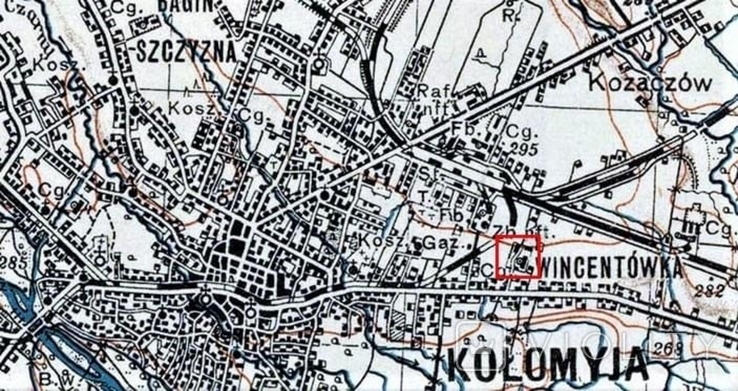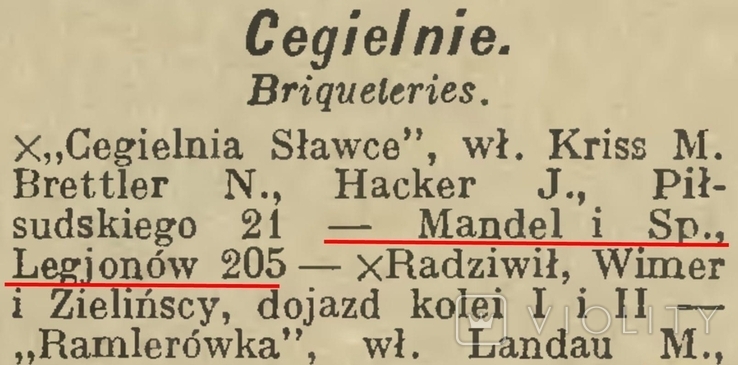To participate in discussions you need to log in.
Login
Brick
Rates:
0
0
Max bid:
0 UAH
0 UAH
Added:
19.04.2024, 22:00
19.04.2024, 22:00
Watching the lot: No one is following
Added:
19.04.2024, 22:00
19.04.2024, 22:00
Ending
27.04.2024, 22:00:54 +5m
Until the end
Current price (0 bids)
18
USDMaterial:
Brick
Цегла
Condition:
Perfect
Ідеальний
Restoration:
0
Defects:
Show original0
Location:
Ukraine, Ivano-Frankivsk oblast, Kolomyia
Payment:
Cash on delivery, Cash payment, PrivatBank, Monobank, Oschadbank, Raiffeisen Bank Aval, Western Union, PayPal, Viza
Sending lot to:  Ukraine,
Ukraine, The whole world
The whole world
 Ukraine,
Ukraine, The whole world
The whole worldDelivery:
Personal meeting Kolomyia (according to the current legislation of the seller's country of residence).
Description:
Vincentivka (Polish: Vincentivka) Wincentówka (German: Wincentówka) is a German colony near Kolomna, founded in 1833. Since ancient times, Kolomyia was a multinational city, Ukrainians, Poles, Jews, Germans and other ethnic groups lived side by side here. Perhaps not everyone knows that in Kolomna there was a large German community, which created many settlements on the outskirts of the city. In particular, since 1811 German colonies were founded here - Mariahilf (1811), Baginsberg (1818), Slavtsi (1833), Vincentivka (1833), Rosenhek (1866) and Fleberg (1892). Mariahilf, Rosenhek and Fleberg were settlements of German Catholics from the Sudetenland. They called themselves "Bohemians" (der Deutschen aus Böhmen). Baginsberg and Slavtsi were settlements of Lutheran Germans from Swabia, Witenberg, Palatinate (true "Swabians"). Vincentivka stood a little apart. It was mainly inhabited by immigrants from Mariahilf and Baginsberg. The first settlers were mostly poor Germans who came to harvest timber for solars in Bukovina. However, due to poor working conditions, the IDPs decided to return home and on the way back came across uninhabited areas around Kolomyia and decided to stay here. Near Kolomyia, the Germans began to build their houses and establish life. Over time, German churches and cultural buildings were established, schools were founded. In particular, at the beginning of the twentieth century. in the suburbs of Mariahilf and Baginsberg there was one 4-class mixed school and one mixed school with German as the language of instruction in the colonies of Rosenhöck and Fleberg. The inhabitants of the city also mentioned the German colonies. In particular, the oldest resident of Kolomyia, Hanna Nahirna, talked about the German settlement of Mariahilf, where she herself was born and where a significant German community lived. In general, at the beginning. Twentieth century. 2,295 Germans lived in the Kolomyia suburbs. To this day, the residence of Germans on this territory is evidenced by the preserved sacred and cultural buildings. Brick of the respected Ivan the February with the signature "MANDL"- Mandel Jozef, cegielnia Wincentówka, Kolomyja, Königreich Galizien und Lodomerien, Österreich-Ungarn Monarchie. The brickyard appeared in the speeds of 1913-1930.
MANDL- Mandel Jozef, cegielnia Wincentówka, Kolomyja, Königreich Galizien und Lodomerien, Österreich-Ungarn Monarchie.
MANDL- Mandel Jozef, cegielnia Wincentówka, Kolomyja, Königreich Galizien und Lodomerien, Österreich-Ungarn Monarchie.
Вінцентівка (пол. Wincentówka) - німецька колонія біля Коломиї, заснована в 1833 році. Здавна Коломия була багатонаціональним містом, тут пліч-о-пліч проживали українці, поляки, євреї, німці та інші етноси. Мабуть не всім відомо, що в Коломиї була велика німецька громада, яка створила чимало поселень на околицях міста. Зокрема починаючи з 1811 р. тут були засновані німецькі колонії - Маріягільф (1811 р.), Баґінсберґ (1818 р.), Славці (1833 р.), Вінцентівка (1833 р.), Розенгек (1866 р.) і Флеберг (1892 р.). Маріягільф, Розенгек та Флеберг були поселеннями німців-католиків, вихідців з Судетских гір . Себе вони називали “богемцями” (der Deutschen aus Böhmen). Баґінсберґ та Славці були поселеннями німців-лютеран зі Швабії, Вінтенберґу, Палатинату (справжні «шваби»). Вінцентівка стояла трохи осібно. Її переважно заселяли вихідці з Маріягільфу та Баґінсберґу. Першими поселенцями були переважно незаможні німці, які приїхали щоб заготовляти ліс для солярень на Буковині. Проте через погані умови праці переселенці вирішили повертатися додому і на зворотному шляху натрапили на незаселені території навколо Коломиї та вирішили тут залишитися. Біля Коломиї німці почали зводити свої будинки та налагоджувати побут. З часом постали німецькі церкви та культурні споруди, заснувалися школи. Зокрема на початку ХХ ст. в передмістях Маріягільф, Баґінсберґ функціонувала одна 4-класна мішана школа та одна мішана школа з німецькою мовою навчання була на території колоній Розенгек і Флеберг. Про німецькі колонії згадували і мешканці міста. Зокрема найстарша мешканка Коломиї Ганна Нагірна розповідала про німецьке поселення Маріягільф, де сама народилася і де проживала значна німецька громада. Загалом на поч. ХХ ст. на коломийських передмістях мешкало 2 295 німців. І до сьогодні, про проживання німців на цій території свідчать збережені сакральні та культурні споруди. Цегла шановного Івана Лютого з сигнатурою "MANDL"- Mandel Jozef, cegielnia Wincentówka, Kolomyja, Königreich Galizien und Lodomerien, Österreich-Ungarn Monarchie. Цегельня фігурувала в скоровідзах 1913-1930 років.
MANDL- Mandel Jozef, cegielnia Wincentówka, Kolomyja, Königreich Galizien und Lodomerien, Österreich-Ungarn Monarchie.
Link to the discussion:
Show originalmessenger лютий Іван
The basic language of the Site is Ukrainian. Translation from other languages is brought to you by automatic machine translation.
Dear Users, please be advised that the machine translation may be not accurate. In case of complains regarding the accuracy of the translation, the original text posted by the Seller has the upper hand.





Seller's other lots
Report about violation to moderator
Please select the type of violation from the list:
How does AUTO BIDDING work
This is a function that helps you place bids automatically in case your bet is interrupted.
For example, current lot price is UAH 120. You are ready to bargain up to UAH 5 000. Enter 5 000 in the field "Automatic bargaining" and click "Place Bet". As a result, your new rate will appear, but not in the amount of UAH 5 000, but only UAH 121. In this case, the system will remember that you are ready to bargain up to UAH 5 000, and will make the necessary bids for you if the price continues to rise.
Let's say another participant places a bet of UAH 2 000. Then the system will automatically place your bet of 2 001 UAH. And only if someone places a bet more than UAH 5 000, you will receive a notification that your auto rate has been interrupted.
For example, current lot price is UAH 120. You are ready to bargain up to UAH 5 000. Enter 5 000 in the field "Automatic bargaining" and click "Place Bet". As a result, your new rate will appear, but not in the amount of UAH 5 000, but only UAH 121. In this case, the system will remember that you are ready to bargain up to UAH 5 000, and will make the necessary bids for you if the price continues to rise.
Let's say another participant places a bet of UAH 2 000. Then the system will automatically place your bet of 2 001 UAH. And only if someone places a bet more than UAH 5 000, you will receive a notification that your auto rate has been interrupted.
Comments 0